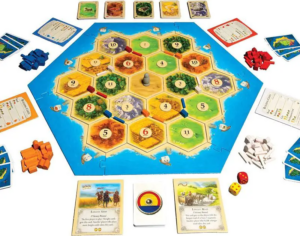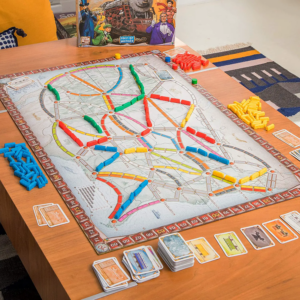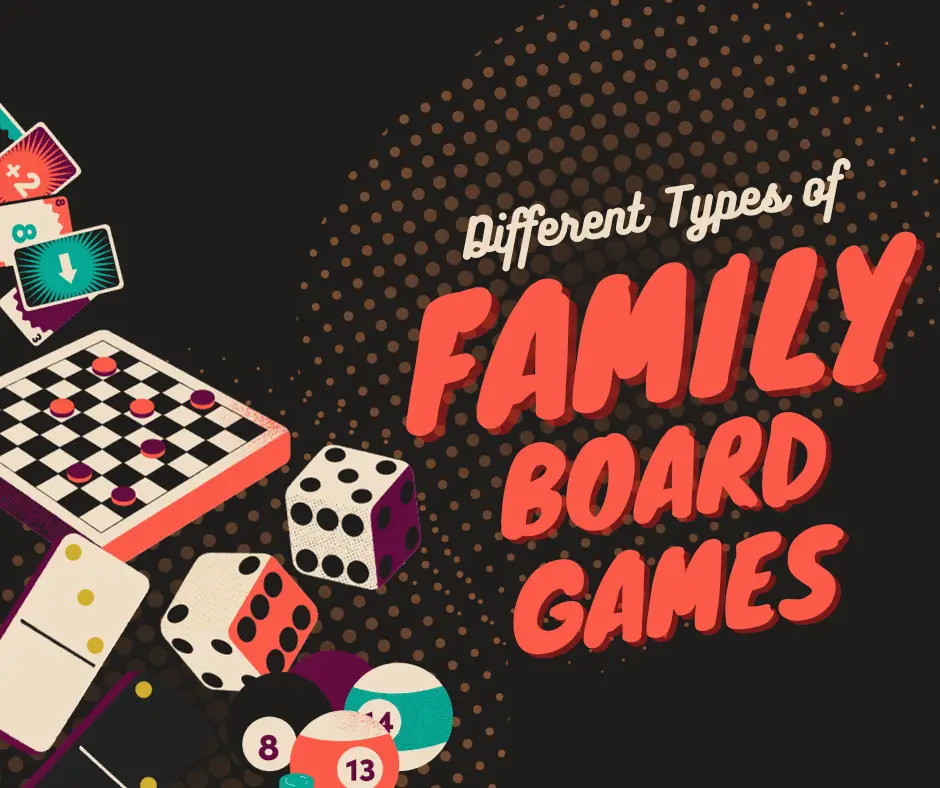Board games still hold a special place in our hearts despite the digital age and video games. People can laugh, compete, and spend quality time together as long as they’re around. Family board game provide an opportunity for parents, kids, and grandparents to bond over an activity they enjoy. There are many options out there, so it can be difficult to pick. In this article, let’s look at the different types of family board games you can play with your family.
Time-tested classic family board game mechanics

It’s always good to revisit the classics. There are some common mechanics in classic board games despite their diverse themes.

Dice Rolling or Spin the Wheel
Rolling dice or Spinning the wheel is a popular mechanic in games like Clue, where player movement is determined by the dice or The Game of Life where you spin to move . This adds suspense and thrill by introducing an element of randomness.
Resource Management
Managing resources is another common mechanic. Games like Monopoly require you to manage money and properties, while word games like Scrabble require management of letters.
Player interaction
Finally, most classic games involve some sort of interaction between players, whether it’s trading in Monopoly, answering a word challenge in Scrabble, or guessing the culprit in Clue. As well as adding excitement to the game, these interactions foster communication and negotiation skills among players.
Educational for kids
These games also can be educational. Monopoly is a great game for teaching kids about money management, budgeting, financial planning, and investments as they trade properties and manage their money. They also learn negotiation skills as they interact with other players, offering trades and deals. The game also introduces them to real-world concepts such as taxes, utilities, and real estate, giving them a basic understanding of economics.
More depth and complexity with Strategy Board Games for the Family
Family members who enjoy mental challenges will enjoy strategic games. In addition to the common game mechanics of classic family board games, these strategy games involve greater depth of decision-making and can utilise mechanics like tile or worker placement and route building.
Tile placement is used in board games where players take turns placing tiles onto a game area to score points, complete specific patterns, or achieve game objectives. These tiles can represent various elements depending on the game’s theme, such as landscapes, paths, resources, or characters
In worker placement, players take turns placing their limited number of worker tokens on various spots on the game board. These spots represent different actions or resources that the players can acquire, such as gathering materials, constructing buildings, or advancing in technology.
Route building is a core game mechanic in many board games where players focus on constructing paths or networks across the game board. This mechanic requires players to strategically place tiles, cards, or tokens to create routes connecting specific locations, such as cities, planets, or points of interest.
Some popular family board game examples
Catan

Catan is a popular multiplayer board game designed by Klaus Teuber. In this game, players assume the roles of settlers, each attempting to build and develop holdings while trading and acquiring resources. Players gain points as their settlements grow; the first to reach a set number of points, typically 10, is the winner. The board is modular, which means it changes every game, making it unique and replayable.
Catan involves trading resources with other players, which can change the tide of the game. A careful plan and resource management are also required when placing roads and settlements that create trade opportunities.
Ticket to Ride

Ticket to Ride utilizes a route-building mechanism where players collect cards representing train cars and use them to claim railway routes on a map. The strategic placement and selection of routes is crucial for victory.
Carcassonne
Carcassonne, meanwhile, involves a unique tile-placement mechanism where the game board is created by the players as the game progresses, making strategic placement of tiles and workers paramount. These kinds of mechanics stimulate cognitive abilities and strategic thinking, making the games both entertaining and challenging.
Cooperative Games
Cooperative board games are a genre of play where participants work together towards a common goal. As players unite to fight the game itself instead of each other, these games foster camaraderie and strategic dialogue. These games also involve collective decision-making, and shared problem-solving.

Games like Pandemic, Forbidden Island, and Flash Point: Fire Rescue, each of which presents unique challenges that require cooperation under pressure, are excellent examples of this genre.
Buy Pandemic on Amazon
Kids Friendly Board Games
Looking for something simple that caters to young kids? Child-friendly board games are specially designed to be accessible, engaging, and educational for younger players. These games often feature vibrant artwork, simple rules, and shorter play times to cater to kids’ attention spans. They help children learn essential skills such as counting, color recognition, and hand-eye coordination . Popular kids-friendly board games include “Candy Land,” with its color-coded path through a magical candy-themed landscape, and action dexterity games like Hungy Hungy Hippos.
Other Family Games to Check out

Must-Play Board Games for Family Feud Fans – Unleash the Fun at Your Next Family Game Night

